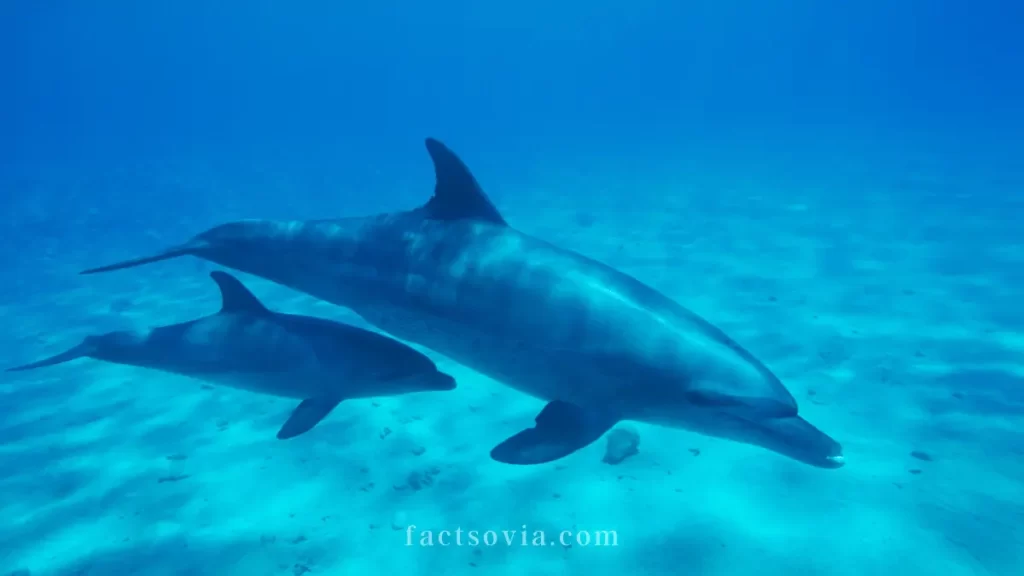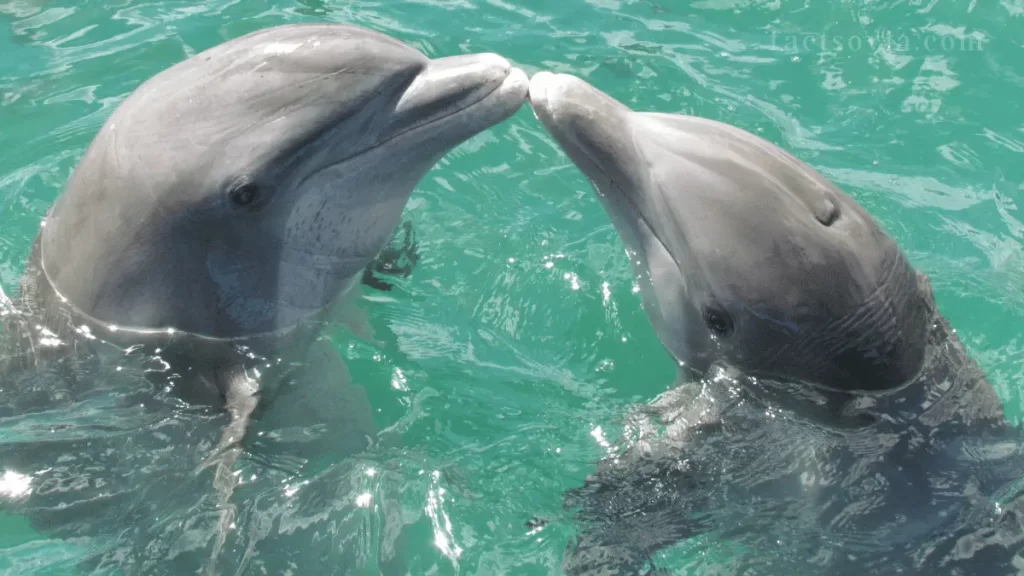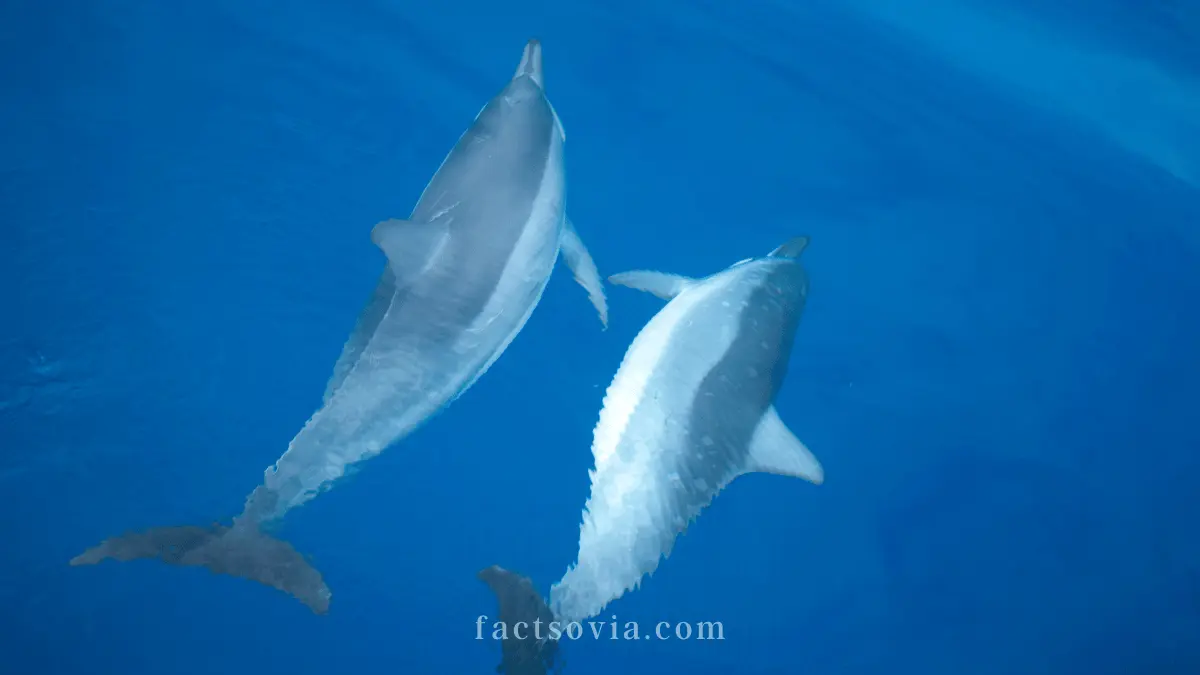We use affiliate links to run our site. When you buy through links on our site, we may earn an affiliate commission, without any added cost to you. Learn more
Do dolphins lay eggs like chickens or give live birth like humans? These intelligent, social creatures of the sea have a fascinating reproductive process that is entirely unique to mammals. Read on to learn the intriguing answers to how dolphins mate, give birth, and raise their adorable calves.
You’ll discover why dolphins don’t lay eggs, how long they are pregnant, how they care for newborns, and more fascinating facts about dolphin reproduction.
This in-depth look at the family lives of these beloved marine mammals will make you see dolphins in a whole new light.
Do Dolphins Lay Eggs?
No, dolphins do not lay eggs like some animals do. Dolphins are mammals, so they give live birth to baby dolphins called calves.
Why Don’t Dolphins Lay Eggs?
Dolphins don’t lay eggs because they are mammals, not birds, reptiles, amphibians, or fish. Mammals give live birth and feed their young milk from their bodies.
Dolphins nurture their young inside the mother’s womb until they are ready to be born. Eggs wouldn’t work as well for dolphin babies that need to stay in water at all times.
How Does A Dolphin Give Birth?
When it’s time for a dolphin calf to be born, the pregnant mother dolphin will swim away from her pod to find a calm, quiet place. Dolphin births usually happen in shallow water near the shore.
The mother rolls onto her side and the calf emerges tail first. This helps the calf start breathing air as soon as its blowhole clears the water. The mother continues rolling to gently guide the calf out. The whole process takes about 20 minutes.
Newborn calves are very dependent on their mothers. They must surface to breathe air every 30 seconds until their lungs strengthen. Mothers support calves to the surface for their first breaths.
Calves don’t develop enough blubber to retain body heat for weeks, so they stay very close to mom for warmth. Dolphin calves nurse on rich milk for over a year as they learn to catch fish and survive on their own.
How Do Dolphins Reproduce?

Dolphins mate belly to belly. The male dolphin has two slits on the underside of his body called mammary slits where the penis is stored internally.
When mating, the penis extends out of the slit. During intercourse, the two dolphins embrace tightly with their bellies together and mate.
Dolphins can mate anytime during the year, but most mating and birthing happen in warmer seasons when food is plentiful. After a 12-month gestation, a single calf is born.
Twins are extremely rare. Dolphins become sexually mature between ages 5-13. Females give birth once every 3-6 years.
How Frequently Do Dolphins Give Birth?
The gestation period for dolphins is around 12 months. So female dolphins only give birth once every 1-3 years. Their long pregnancy and slow physical maturity mean dolphins have relatively few offspring compared to other marine mammals.
Most female dolphins first give birth between the ages of 5 and 13. They usually have one calf at a time, twins are very rare. Females have 1-6 offspring in their lifetime, averaging about 5.
The interval between births ranges from 2-7 years. Shorter intervals of 1-3 years are more common when environmental conditions are better and food is abundant.
The Surprising Life Expectancy of Dolphins: How Long Do They Really Live?
How Long Do Dolphins Nurse Their Calves?
Dolphins are mammals, so mothers nurse their young. Newborns need to nurse frequently, up to every 1-2 hours. This high-fat milk helps them grow and develop blubber to stay warm.
Calves continue to nurse for over a year. The weaning process is gradual, with less frequent nursing over many months. By age 2, calves are usually fully weaned but may continue occasional social nursing. The long nursing period helps build strong social bonds between dolphin mothers and calves.

How Do Dolphins Feed Their Young Ones?
Baby dolphins called calves rely completely on their mothers for food during the first year of life. Dolphin milk contains up to 10 times more fat than human milk. This gives calves the high energy they need to grow quickly.
Calves nurse frequently on demand, sometimes every 30 minutes. This continues for 12-18 months until they are ready for solid food. Around 6 months of age, calves also start experimenting with fish and following mothers during foraging.
The mother catches fish and then passes it back for the calf to eat. She may also chew the fish to soften it and regurgitate it. Calves copy their mothers’ fishing techniques. After a year of nursing and training, calves can hunt fish on their own. But juveniles will continue begging mothers for fish up to age 3.
Conclusion:
We hope this overview has helped shed light on the amazing process of dolphin reproduction and calf-rearing. Dolphins have adapted in extraordinary ways to give birth and raise their young in an aquatic environment. Don’t forget to share this post if you found it fascinating!
Explore our site for more insights into the lives of wildlife. We aim to provide accessible information to increase understanding and encourage the conservation of the incredible animals we share this planet with.
Frequently Asked Questions
Do dolphins stick to one partner?
No, dolphins do not mate for life or stick with one partner. They are promiscuous mammals who have multiple mates each year and over their lifetimes. Both males and females have multiple partners and complex social behaviors around mating.
Do dolphins have belly buttons?
Yes, dolphins have belly buttons like all mammals. A dolphin’s belly button is where the umbilical cord was attached during gestation and nursing. It heals and scars over after the cord falls off shortly after birth. The belly button may be visible as a small scar on an adult dolphin’s underside.
How many calves do dolphins have at a time?
Dolphins almost always have one calf at a time. Twin dolphins are extremely rare. Female dolphins usually have their first calf between ages 5-13 and give birth again every 2-7 years. Females produce around 4-6 calves over their lifetime.
How long do dolphin pups remain with their mothers?
Dolphin calves stay with their mothers for 3-6 years before fully separating. They begin eating fish after a year but continue nursing occasionally for 2 years. As juveniles, they gain independence while still receiving protection and training from their mothers.
When can baby dolphins start hunting for themselves?
Baby dolphins start learning hunting skills at around 6 months by following their mothers during foraging. But calves aren’t skilled enough to fully catch and eat fish on their own until age 1. They take several years beyond that to master sophisticated fishing techniques like working together to herd fish.
Amazon and the Amazon logo are trademarks of Amazon.com, Inc, or its affiliates.
